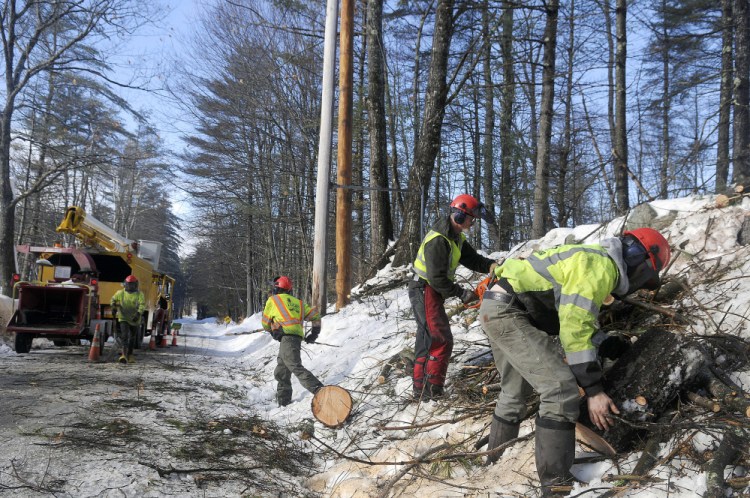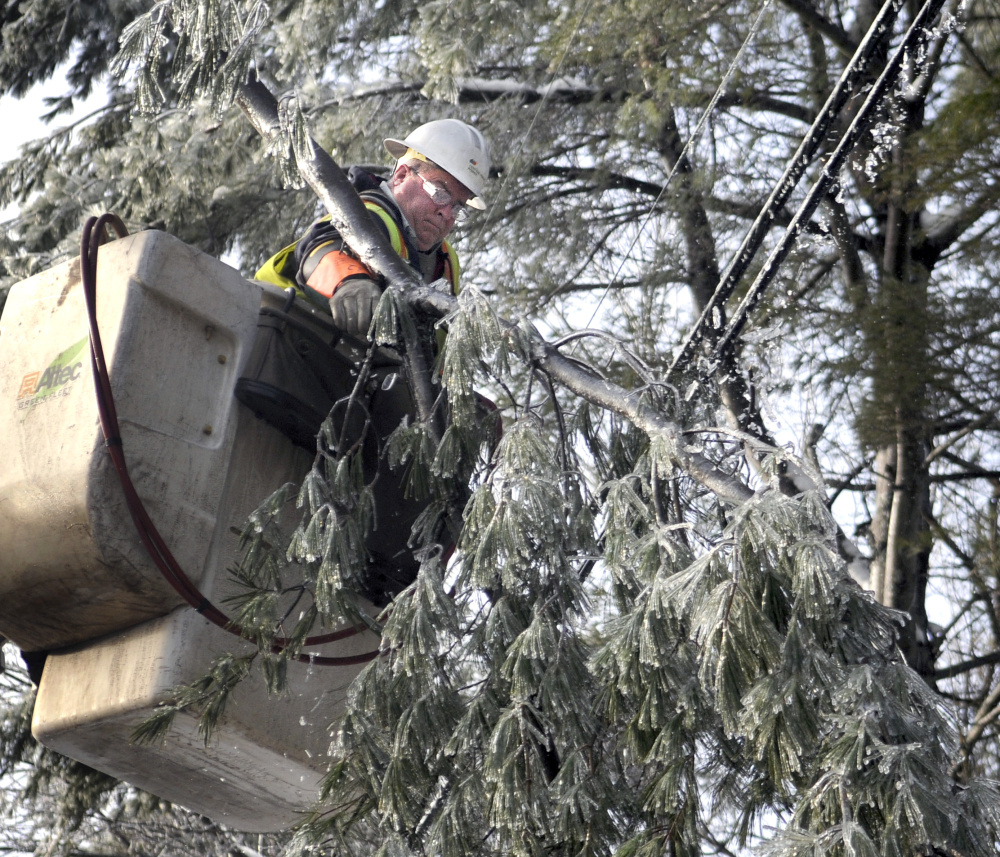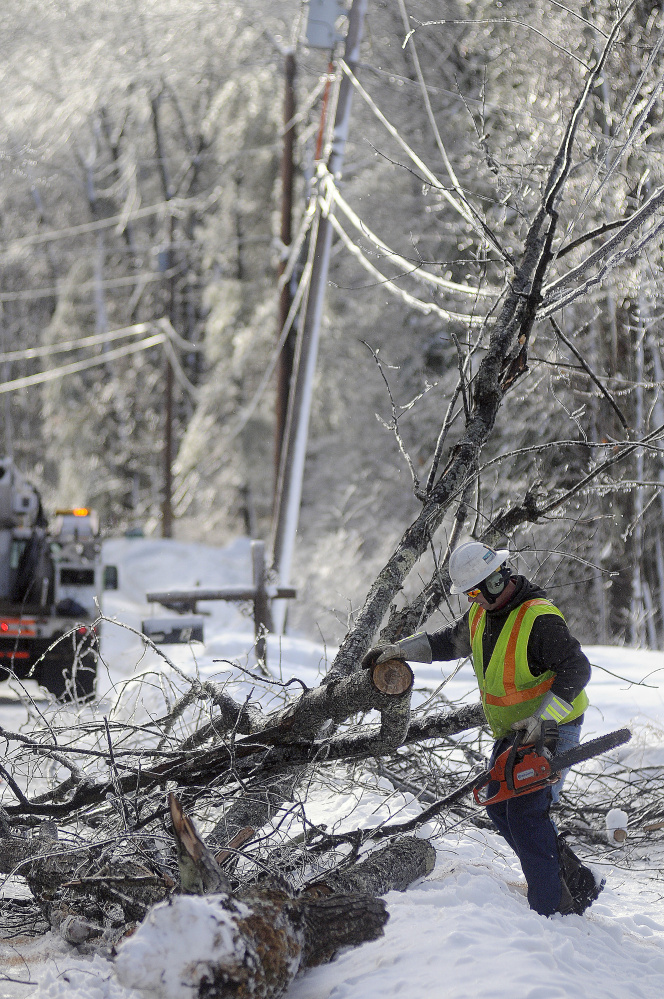AUGUSTA — The freezing rain that fell most of Tuesday night did not make for easy travel Wednesday morning, when early risers were faced with sheets of ice on their driveways, walking paths and roads, while dirty pools of melted slush and water formed throughout the day.
But many Mainers were spared one of the more dreaded aspects of any winter storm: the power outages that follow. In Kennebec County, just over 200 Central Maine Power Co. customers lost their power at the height of the overnight weather system. By 3 p.m., just 60 households in Mount Vernon, Belgrade and Sidney were reported still to be lacking power.
The low outage count might have been particularly welcome after last week’s nor’easter, which dumped heavy snow across the state and led to thousands of outages.
It also might have reflected improvements in the way CMP inspects its grid and tries to prevent trees and branches from falling on power lines during storms.
In 2008, CMP began trimming the vegetation around its roadside lines more frequently in an attempt to lessen the number of power outages that result from any storm, according to CMP spokeswoman Gail Rice.
That year, the company began a five-year cycle of removing trees, branches and brush from along its 24,000 miles of power lines. Each year, contractors hired and overseen by CMP clear the vegetation that has grown along 4,800 miles of lines, Rice said. Rather than clear-cut the nearby trees, they trim 8 feet to each side of the utility lines and 15 feet above them, Rice added.
“We want to make sure the system is in good shape and that the vegetation around the systems is under control,” Rice said. “We understand people like to have trees along the roadside. They’re beautiful and good for the environment, but we do have keep the growth in check. We think we’re striking a pretty good balance between preserving trees as much as possible and keeping reliability up (along the power grid).”
Before 2008, CMP had trees trimmed every seven or eight years, Rice said, but it decided to increase those efforts after two snowstorms in April 2007 that knocked down many tree limbs and led to widespread power loss.
Another major weather event that lingers in Mainers’ memories is the ice storm of January 1998, which left 600,000 Mainers without power. That storm began on Jan. 5. This week’s weather system — which happened on Jan. 3 — produced freezing rain around much of central Maine, as well as sleet and snow in other parts of the state.
Such a mix of weather is common during December and January, when warm air coming from the south flows up over the cold air on the ground in Maine, said Margaret Curtis, a meteorologist at the National Weather Service.
In 2008, CMP crews also started inspecting all 24,000 miles of lines on a five-year cycle.
“Since we have done that, our tree-related power outages have gone down by about 30 percent,” Rice said. “We hear from our customers all the time that since we’ve (expanded) the tree trimming program that their outages have been reduced.”
The company finished its first five-year cycle of trimming and inspections in 2013.
Rice advised homeowners planting vegetation near power lines to consider dwarf trees and shrubs that won’t interfere with the infrastructure eventually. She also said that any homeowners who have trees near power lines can request notification and a consultation from CMP prior to the trimming.
Charles Eichacker — 621-5642
Twitter: @ceichacker
Send questions/comments to the editors.






Success. Please wait for the page to reload. If the page does not reload within 5 seconds, please refresh the page.
Enter your email and password to access comments.
Hi, to comment on stories you must . This profile is in addition to your subscription and website login.
Already have a commenting profile? .
Invalid username/password.
Please check your email to confirm and complete your registration.
Only subscribers are eligible to post comments. Please subscribe or login first for digital access. Here’s why.
Use the form below to reset your password. When you've submitted your account email, we will send an email with a reset code.